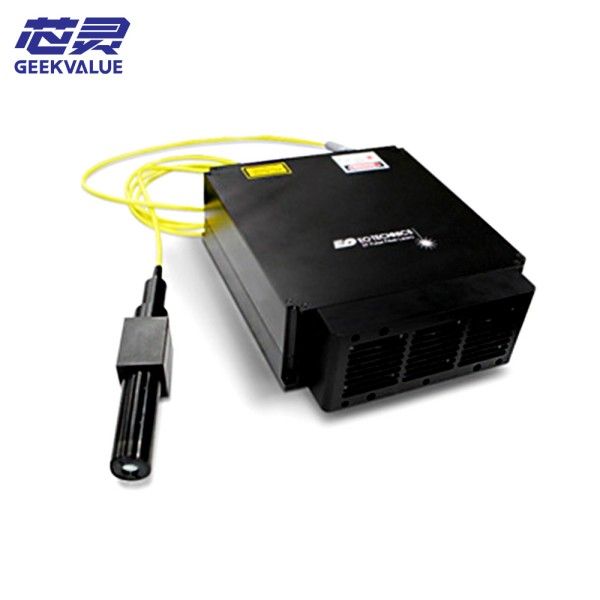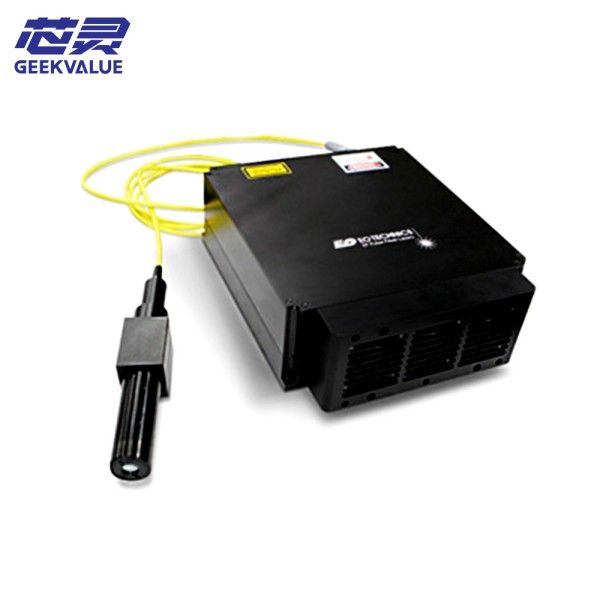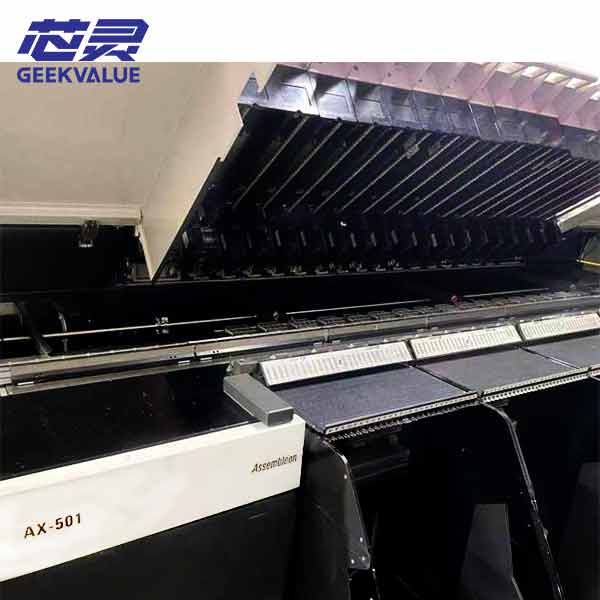EO (EdgeWave) laser EF20P-QSF funktsiooni ja põhimõtte üksikasjad
EO EF20P-QSF on suure võimsusega ja suure kordussagedusega nanosekundiline Q-lülitusega laser, mis kasutab pooljuhtpumbaga tahkislaseri (DPSS) tehnoloogiat ja sobib täppistöötluseks, lasermärgistamiseks, LIBS-iks (laser-induced breakdown spectroscopy) ja teadusuuringuteks.
1. Põhifunktsioonid
(1) Suur võimsus ja kõrge impulsienergia
Keskmine võimsus: 20 W (@1064 nm).
Ühe impulsi energia: kuni 1 mJ (olenevalt kordussagedusest).
Kordussagedus: 1–200 kHz (reguleeritav), et vastata erinevatele töötlemisnõuetele.
(2) Suurepärane kiire kvaliteet
M² < 1,3 (difraktsioonipiiri lähedal), sobib peeneks mikrotöötluseks.
Gaussi kiir, väike fookuspunkt, kõrge energiatihedus.
(3) Paindlik impulsi juhtimine
Reguleeritav impulsi laius: 10–50 ns (tavaline väärtus), et optimeerida erinevate materjalide töötlemisefekti.
Väline päästik: toetab TTL/PWM modulatsiooni, ühildub automaatikasüsteemidega.
(4) Tööstuslik töökindlus
Täistahke konstruktsioon (lambivaba pumpamine), eluiga >20 000 tundi.
Õhkjahutus/vesijahutus on valikuline, kohandub erinevate töökeskkondadega.
2. Tööpõhimõte
EF20P-QSF põhineb Q-switched DPSS lasertehnoloogial ja põhiprotsess on järgmine:
(1) Pooljuhtide pumpamine (LD pumpamine)
Laserdiood (LD) pumpab Nd:YVO4 või Nd:YAG kristalli haruldaste muldmetallide ioonide (Nd³⁺) ergutamiseks metastabiilse energiatasemeni.
(2) Q-lülitatud impulsi genereerimine
Akusto-optiline Q-lüliti (AO Q-Switch) või elektro-optiline Q-lüliti (EO Q-Switch) lülitab kiiresti resonantsõõnsuse Q väärtuse ja vabastab pärast energia kogumist suure võimsusega nanosekundilisi impulsse.
(3) Lainepikkuse teisendamine (valikuline)
Sünkroonsageduse genereerimine (SHG) ja kolmekordse sageduse genereerimine (THG) teostatakse mittelineaarsete kristallide (nt LBO, KTP) kaudu ning väljund on 532 nm (roheline tuli) või 355 nm (ultraviolettvalgus).
(4) Tala kujundamine ja väljund
Väljund on optimeeritud kiire laiendaja / teravustamisobjektiivi abil, et tagada kõrge energiatihedus ja töötlemise täpsus.
3. Tüüpilised rakendused
(1) Täppistöötlus
Haprate materjalide (klaas, safiir, keraamika) lõikamine.
Mikropuurimine (PCB, kütusepihusti, elektroonikakomponendid).
(2) Lasermärgistus
Suure kontrastsusega metallimärgistus (roostevaba teras, alumiiniumisulam).
Plastik/keraamiline graveerimine (termilisi kahjustusi pole).
(3) Teaduslik uurimine ja katsetamine
LIBS (elemendianalüüs): suure impulsienergiaga ergastusplasma.
Laserradar (LIDAR): atmosfääri tuvastamine, kauguse määramine.
(4) Meditsiin ja ilu
Nahahooldus (pigmentatsiooni eemaldamine, tätoveeringu eemaldamine).
Hamba kõvakoe ravi (täppisablatsioon).
4. Tehnilised parameetrid (tavalised väärtused)
Parameetrid EF20P-QSF (1064 nm) EF20P-QSF (532 nm)
Lainepikkus 1064 nm 532 nm (topeltsagedus)
Keskmine võimsus 20 W 10 W
Ühe impulsi energia 1 mJ (@20 kHz) 0,5 mJ (@20 kHz)
Kordussagedus 1–200 kHz 1–200 kHz
Impulsi laius 10–50 ns 8–30 ns
Tala kvaliteet (M²) <1,3 <1,5
Jahutusmeetod Õhkjahutus/vesijahutus Õhkjahutus/vesijahutus
5. Konkureerivate toodete võrdlus (EF20P-QSF vs. kiud/CO₂ laser)
Sisaldab EF20P-QSF (DPSS) Fiber laser CO₂ laserit
Lainepikkus 1064/532/355 nm 1060–1080 nm 10,6 μm
Impulsienergia Kõrge (mJ tase) Madalam (µJ–mJ) Kõrge (kuid suure termilise mõjuga)
Tala kvaliteet M² <1,3 M² <1,1 M² ~1,2–2
Kohaldatavad materjalid Metall/mittemetall Metallipõhine mittemetall (plast/orgaaniline)
Hooldusnõuded Madal (lamp ei pumpa) Väga madal Vajadus reguleerida gaasi/läätse
6. Eeliste kokkuvõte
Kõrge impulsienergia: sobib suure löögiga töötlemiseks (puurimine, LIBS).
Suurepärane tala kvaliteet: täpne mikrotöötlus (M²<1,3).
Tööstusliku kvaliteediga stabiilsus: tahkiskonstruktsioon, pikk kasutusiga, hooldusvaba.
Saadaval on mitu lainepikkust: 1064 nm/532 nm/355 nm, sobib erinevatele materjalidele.
Kohaldatavad tööstusharud: elektroonika tootmine, teaduslikud uuringud, meditsiiniline ilu, lennundus jne.





